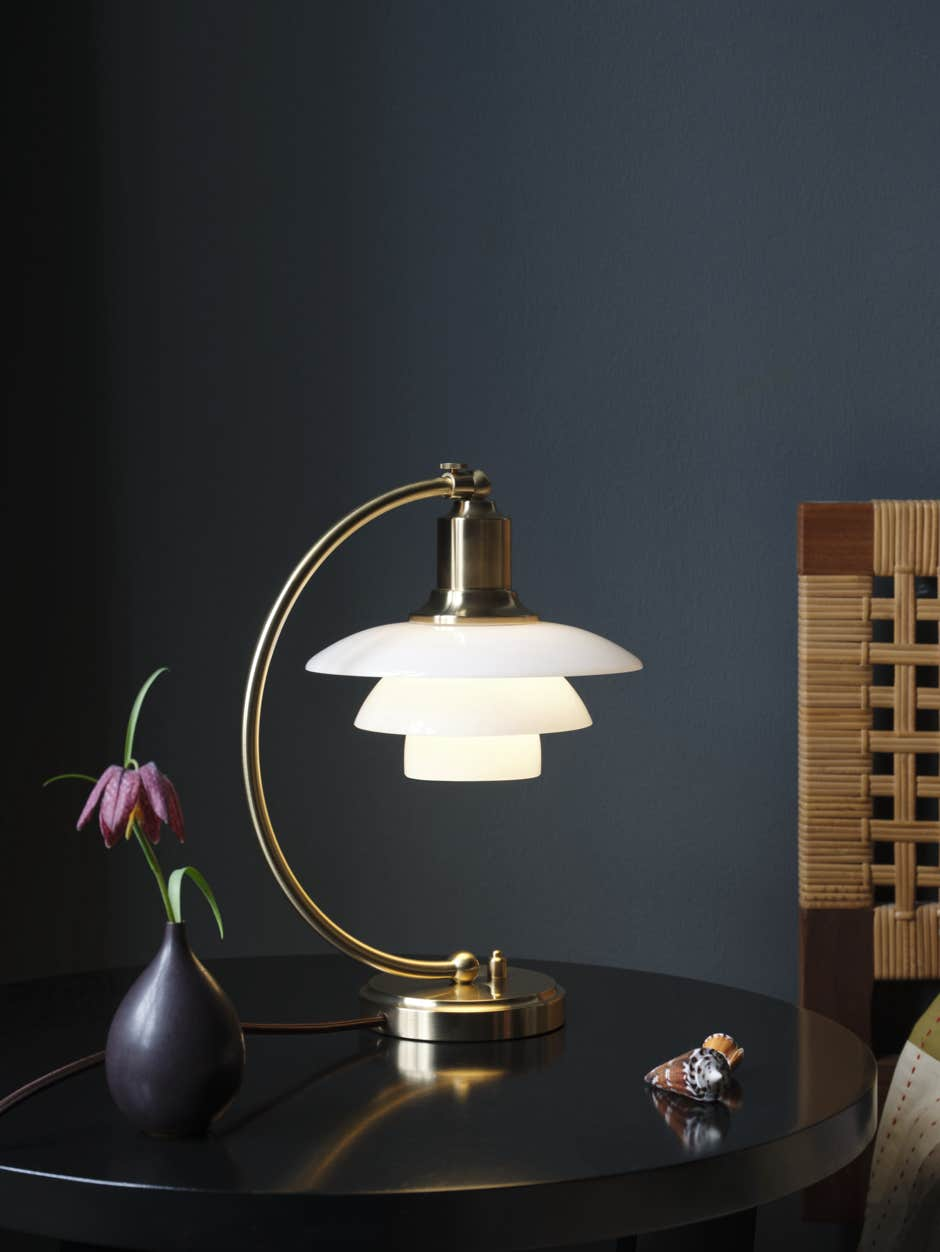15% off with DESIGN15


Designed in 1939, characterized by the curved shape of its base, the PH Luna was nicknamed "Natbordslampen" by Poul Henningsen, which means "bedside lamp". It is reissued in a limited series in a beautiful brushed brass finish with opaline glass.
The top of the lamp can be tilted 45 degrees to the right or left by rotating the lampshade bracket and tightening the finger screw. The PH Luna was originally only 230mm high and was enlarged a bit to improve functionality. The initial PH is engraved on the edge of the base.
Dimensions Ø25,5 x H32,4 cm
Materials 3-layer hand-blown opal glass and untreated brass – 2.8 m brown textile cord
Light source 1 x E27 15W
OUT OF STOCK
Born in Copenhagen, Poul Henningsen's mother was the famous Danish actress Agnes Henningsen. He never graduated as an architect, but studied at the Technical School in Frederiksberg (Denmark) from 1911 to 1914, then at the Technical College in Copenhagen (1914-1917).
He began practicing traditional functionalist architecture, but over the years his professional interests evolved to focus primarily on lighting, which is what makes him most famous. He also expanded his field of activity into areas of writing, becoming a journalist and author. For a short period at the start of World War II, he was the chief architect of the Tivoli Gardens in Copenhagen. But like many other creatives, he was forced to flee Denmark during the German occupation, then quickly became a vital part of the Danish colony of artists living in Sweden.
His long collaboration with Louis Poulsen began in 1925 and lasted until his death. To this day, Louis Poulsen still benefits from his genius. Poul Henningsen was also the first editor-in-chief of the business magazine “NYT”. The CEO of Louis Poulsen at the time, Sophus Kaastrup-Olsen, offered the magazine to PH because he had been fired from the Danish newspaper he worked for (his opinions were too radical).
Poul Henningsen's pioneering work on the relationships between light structures, shadows, glare and color reproduction, compared to man's need for light, remains the foundation of the light theories still practiced by Louis Poulsen.
Garantie Prix
Proposer du design au juste prix fait partie intégrante de notre travail. Si vous trouvez le même article à un prix inférieur chez un autre revendeur, livraison incluse, non seulement nous l'égalerons, mais nous vous proposerons même un meilleur prix.
Comment en profiter ?
Nous comparons chaque jour nos prix avec tous les détaillants autorisés en Europe. Si néanmoins vous trouvez moins cher, contactez-nous pour une contre-proposition.
Nous devons être en mesure de vérifier que l'article est authentique, neuf, parfaitement identique (taille, matériaux, couleur, etc.) et qu'il ne fait pas partie d'une campagne ou d’un déstockage temporaire.
La base valide est, par exemple, un devis actuel ou un lien direct vers le site Web d'un autre détaillant où le prix inférieur est indiqué. Une image d’e-mail n'est pas valide, l'e-mail d'origine doit être transféré.
L’offre ne s'applique pas aux commandes déjà passées et ne peut être couplée à aucune de nos autres offres ou promotions.
Price Guarantee
Offering design at the right price is an integral part of our work. If you find the same item at a lower price at another retailer, delivery included, we will not only match it, but even offer you a better price.
How to take advantage of it?
We compare our prices every day with all authorized retailers in Europe. If nevertheless you find cheaper, contact us for a counter-proposal.
We must be able to verify that the item is authentic, new, perfectly identical (size, materials, color, etc.)
and that it is not part of a campaign or temporary destocking.
The valid basis is, for example, a current quote or a direct link to another retailer's website where the lower price is indicated. An email image is invalid, the original email must be forwarded.
The offer does not apply to orders already placed and cannot be combined with any of our other offers or promotions.